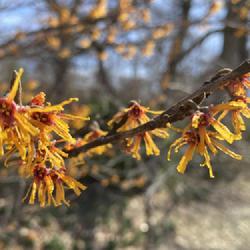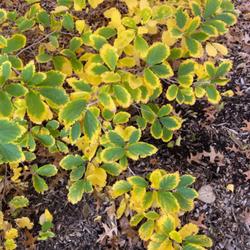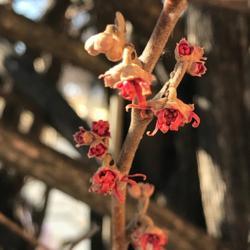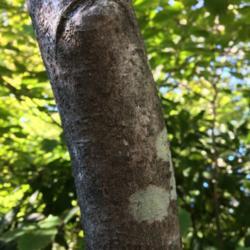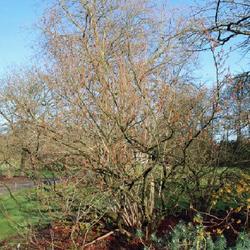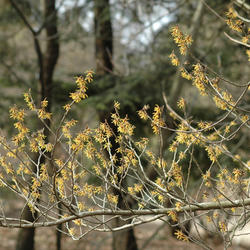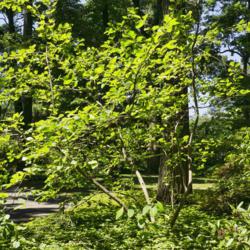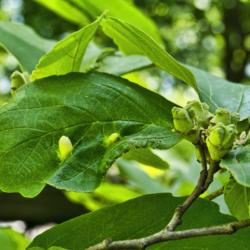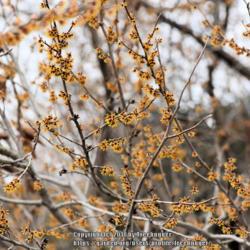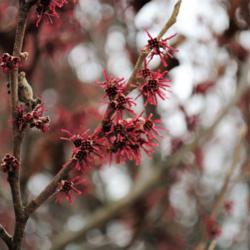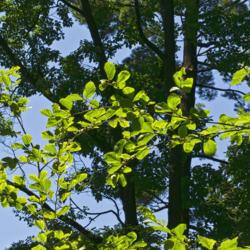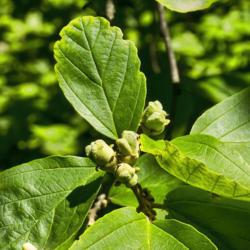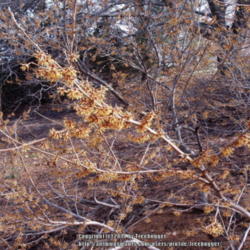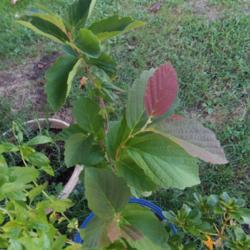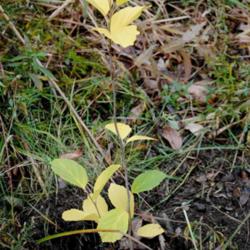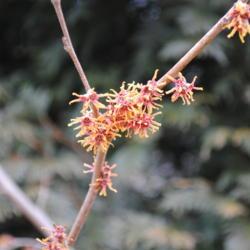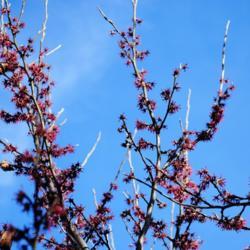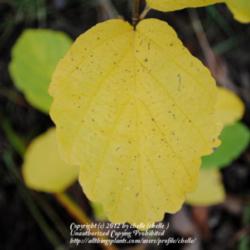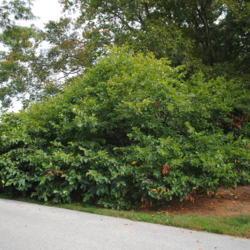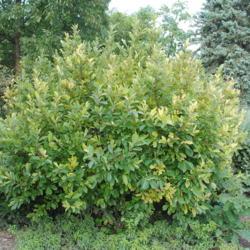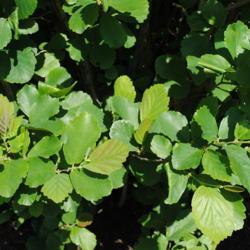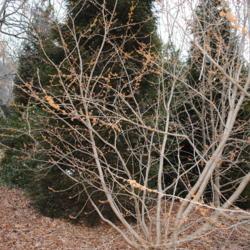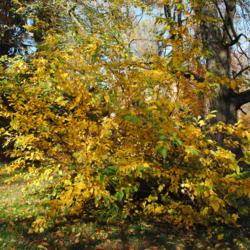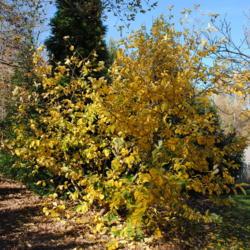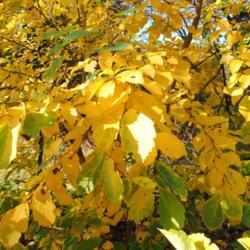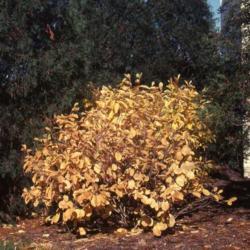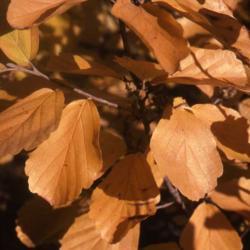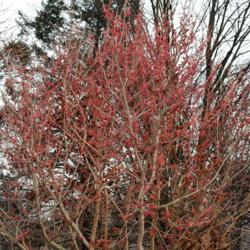Posted by
ILPARW (southeast Pennsylvania - Zone 6b) on Jan 4, 2018 12:33 PM concerning plant:
The Vernal or Ozark Witchhazel is native to the Ozark Mountain region of southern Missouri, northern Arkansas, and some of east Oklahoma in lowland wet and wet mesic sites and along watercourses, and in moist woods. It is a shrub that usually gets about 6 to 10 feet high, but it can sometimes eventually get to 15 feet or even 20 in a good place after a long time. Its leaves are just slightly smaller than the Common species, to 5 inches long. It flowers in winter into early spring, usually February to early April. The flowers are typically with a bronze-red calyx lobe and yellow petals, but sometimes flowers can be all yellow or bronzy-orange or bronzy-red. The flowers with strap-like petals are about 1/2 to 3/4 inches wide in clusters of 3 or 4 and they are fragrant and loved by bees. The fruits are brown, woody, 2-valved capsules that split open in fall to expel little black seeds and they are on the plant year round. Many nurseries sell some of this species and maybe even some of the few cultivars. It is not used much by the average homeowner, actually not known by the person, but landscape architects love Witchhazels and place them at estates or upscale housing, parks, shopping centers, campuses, office and industrial parks, and various other public properties; it is a high quality, neat, clean shrub with great golden autumn color; the only disadvantage is that it often holds the dead leaves into much of the winter, like other Witchhazels. The Vernal species is planted more often than the larger Common species and it is more commonly planted in the Midwest as around Chicago, IL, than in the East. The east Asian species which also blooms in late winter-spring has taken a lot of its place because the latter has larger, showier flowers, though the Asian species are larger with stouter stems and larger leaves. This Vernal species tolerates heavy clay soils and its pH range is from 5.5 to 7.0. Like other Witchhazels, it is best not placed in sites with strong, dry winds blowing through, but places with some shelter.
Posted by
chelle (N.E. Indiana - Zone 5b, and Florida - Zone 9b - Zone 9b) on Jan 18, 2012 6:59 AM concerning plant:
Witchhazel is useful in a variety of ways. It typically flowers in late winter when other blooms are scarce, making it a good choice to clip and bring indoors where its blossoms of sweet perfume can be savored. Firmly established plants will readily regrow and replace snipped branches.
The distilled oil of Hamamelis vernalis is used as an ingredient in lotions and salves for pain relief, skin care, and hemorrhoid treatment. It's particularly well known for its antioxidant, radiation protective, anti-inflammatory, and antiviral properties.
Witchhazel is particularly useful as an understory shrub layer in naturalized wildlife areas, providing both food and shelter to birds and deer.
Hamamelis vernalis is shallow-rooted, preferring a moist planting site; and will easily tolerate a slow-draining and difficult area in the landscape. It will also grow in shade, though its blooms may prove to be fewer and lighter in color when planted in a shady site.
